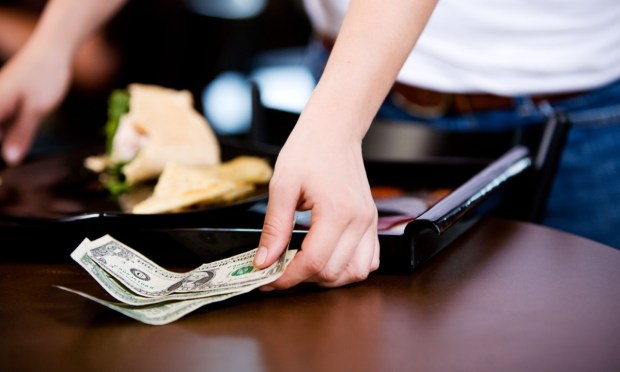
Social media offers a running commentary on consumer sentiment and serves as a barometer of backlash.
It may be the case that tiplflation is pushing individuals to scale back on gratuities, or not dig into their pockets to tip at all.
Media outlets have been detailing rising debate on tipping — how to do it, why to do it, or not — and TikTok is emerging as a prime forum for a slew of voices weighing in. In one example, TikTokers have been jousting over tipping hairstylists.
We mentioned anecdotes, so here’s an observation from the PYMNTS trenches. This past weekend a PYMNTS staffer was at a favorite diner and left the tip in cash on the table. Upon paying with a card at the point-of-sale terminal at the front of the restaurant, the staffer declined the tip “prompt” while telling management that a cash tip had been decided upon. Both the manager and the waitress noted that consumers are opting for low or “no” tips when asked by the terminal, and in some cases are simply not leaving tips (i.e., there’s nothing on the table).
Add up enough anecdotal evidence, and a trend emerges.
The PYMNTS Intelligence report “Tipflation Is Changing Spending Habits of 1 in 6 Consumers” took note of the shifting tipping habits headed into 2024, finding that 29% of consumers said tipping had gotten “out of hand” and that 17% of consumers had cut spending due to tips.
There’s a negative ripple effect here. If consumers cut back on spending for services, they cut back on tipping too. Twenty-seven percent of Generation Z and 23% of millennials said in the report: “I have cut back on spending because tipping makes things cost too much.” In contrast, 13% of Generation X and 12% of baby boomers and seniors said the same.
The data showed that roughly 40% of consumers have cut spending on personal grooming services due to the rising costs of tipping. The pressures are especially evident in an economy where, as additional PYMNTS Intelligence data from the report “85% of Consumers Say Incomes Are Not Matching Inflation” showed, 85% of consumers do not feel that their wages have been keeping pace with inflation.
Sixty percent of the consumers who have scaled back spending have reduced their spending on food from table-service restaurants, while 49% have done so in quick-service restaurants where tipping is increasingly encouraged. Another 27% and 26% of consumers have tightened their budgets for hotels and rideshare services, respectively.
The impact on individuals’ income streams may be pronounced. The PYMNTS Intelligence report “High-Income Consumers Lead Surprising New Data on Side Hustles,” found that 30% of consumers earn extra money from gig economy work or side hustles. Drill down a bit, and 53% of consumers who live paycheck to paycheck said the loss of that income would be detrimental. A mid-single percentage point slice of all income groups told PYMNTS that they earned supplemental income from informal or on-demand tasks. These are the activities — from pet services to in-home hairstyling to babysitting — that depend, at least in part, on tips.